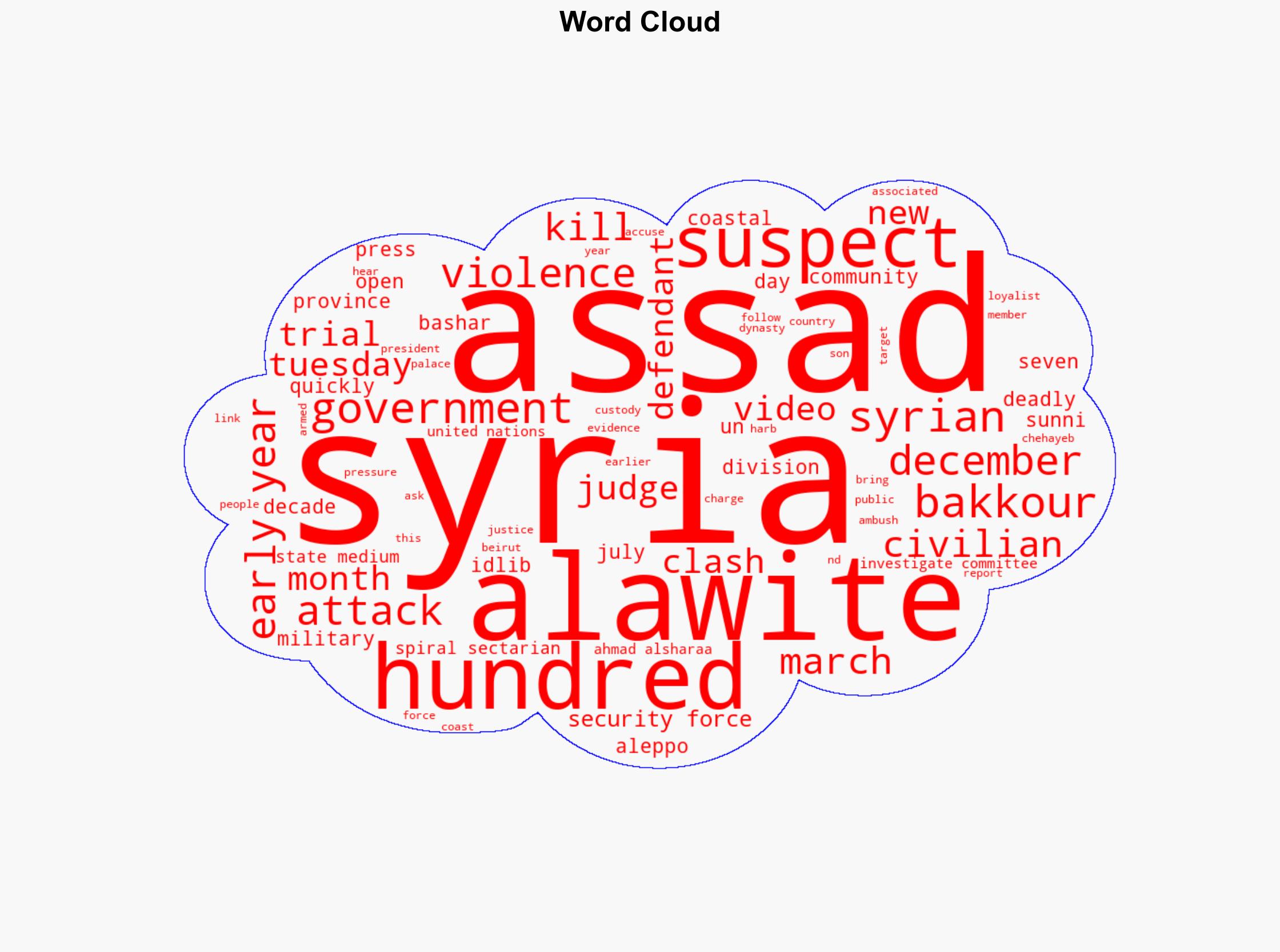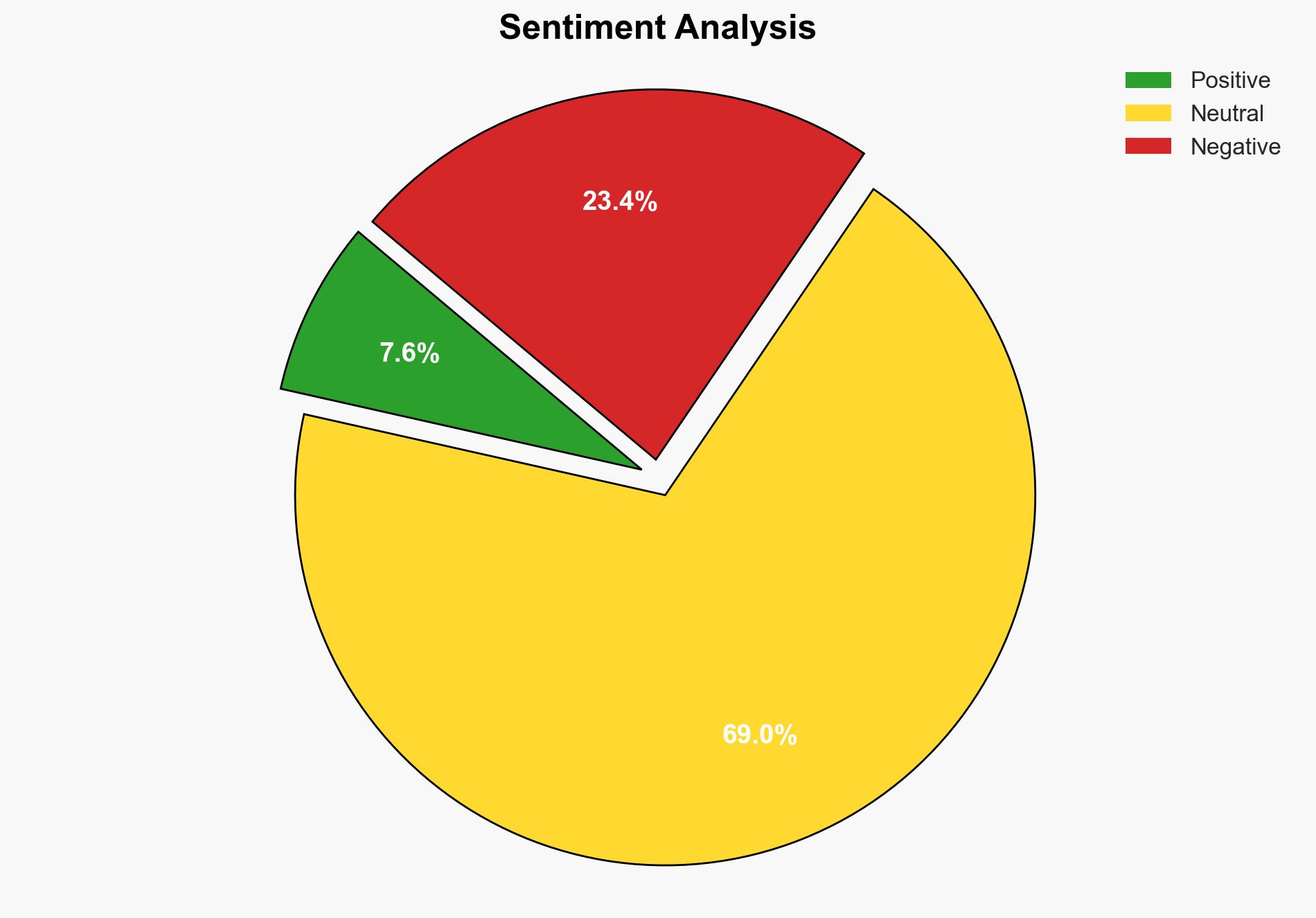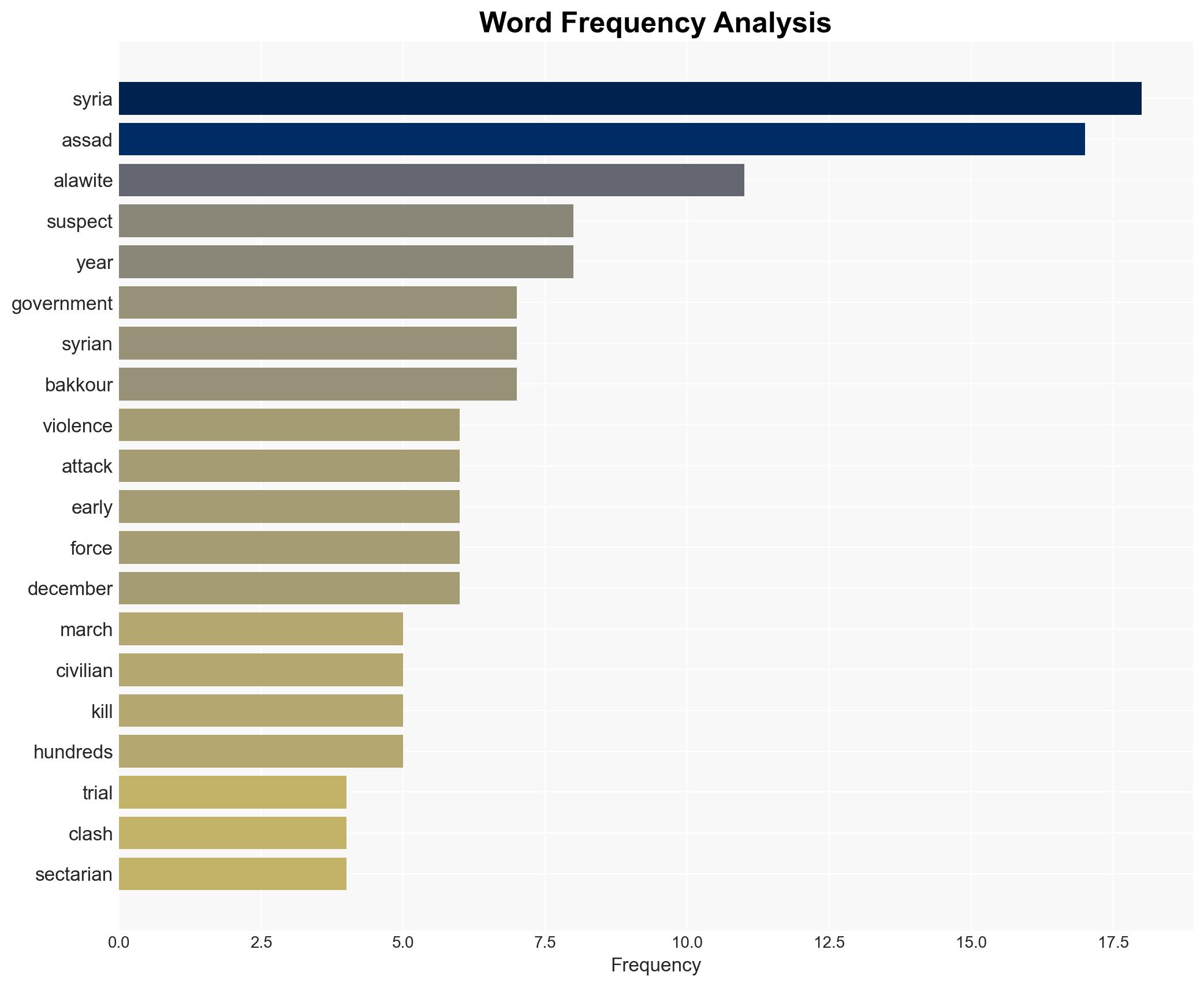Syria opens first public trial over deadly coastal violence – ABC News
Published on: 2025-11-18
AI-powered OSINT brief from verified open sources. Automated NLP signal extraction with human verification. See our Methodology and Why WorldWideWatchers.
Intelligence Report:
1. BLUF (Bottom Line Up Front)
The most supported hypothesis is that the trial is primarily a strategic move by the new Syrian government to demonstrate commitment to judicial reform and gain international legitimacy. Confidence level: Moderate. Recommended action: Monitor the trial proceedings for indications of genuine reform versus performative justice, and assess impacts on regional stability and international relations.
2. Competing Hypotheses
Hypothesis 1: The trial is a genuine effort by the new Syrian government to address past violence and implement judicial reforms, signaling a break from the Assad regime’s practices.
Hypothesis 2: The trial is a performative action aimed at placating international pressure and securing diplomatic and economic concessions, without substantive changes to the judicial system.
Hypothesis 2 is more likely due to the timing of the trial following international pressure and the historical context of similar actions by regimes under scrutiny.
3. Key Assumptions and Red Flags
Assumptions: The new government has the capacity and willingness to reform the judicial system. International pressure is a significant motivator for the trial.
Red Flags: The rapid adjournment and rescheduling of the trial, potential fabrication of evidence, and the involvement of state media suggest possible manipulation.
4. Implications and Strategic Risks
The trial could either stabilize or destabilize the region depending on its conduct and outcomes. A genuine reform could lead to reduced sectarian tensions and improved international relations. Conversely, if perceived as a sham, it could exacerbate internal divisions and international skepticism, potentially leading to increased sanctions or isolation.
5. Recommendations and Outlook
- Monitor trial developments and international reactions closely to assess the sincerity of reforms.
- Engage with regional allies to prepare for potential escalation in sectarian violence.
- Best-case scenario: Successful reforms lead to reduced sectarian tensions and improved international relations.
- Worst-case scenario: The trial is perceived as a sham, leading to increased internal conflict and international isolation.
- Most-likely scenario: Limited reforms with mixed international reception, maintaining a status quo of cautious engagement.
6. Key Individuals and Entities
Ahmad al-Sharaa (Interim President), Bashar Assad (Former President), Ayman Bakkour (Relative of a defendant).
7. Thematic Tags
Structured Analytic Techniques Applied
- Cognitive Bias Stress Test: Expose and correct potential biases in assessments through red-teaming and structured challenge.
- Bayesian Scenario Modeling: Use probabilistic forecasting for conflict trajectories or escalation likelihood.
- Network Influence Mapping: Map relationships between state and non-state actors for impact estimation.
Explore more:
National Security Threats Briefs ·
Daily Summary ·
Support us





